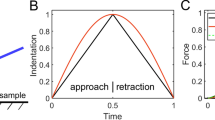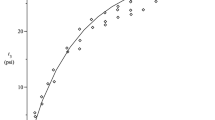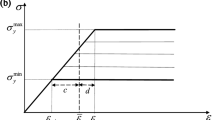Abstract
THE retarded elastic extension of a high polymer under load can be represented by a series of Voigt elements, each consisting of a spring and dashpot in parallel. With each element is associated a retardation time, and a series of Voigt elements therefore gives rise to a spectrum of retardation times. This spectrum can be obtained from a creep curve by a method due to Alfrey1. In his method the extension is plotted against log-time, and the slope of this curve when plotted against log–time gives a close approximation to the spectrum.
This is a preview of subscription content, access via your institution
Access options
Subscribe to this journal
Receive 51 print issues and online access
$199.00 per year
only $3.90 per issue
Buy this article
- Purchase on Springer Link
- Instant access to full article PDF
Prices may be subject to local taxes which are calculated during checkout
Similar content being viewed by others
References
Alfrey, T., “Mechanical Behaviour of High Polymers”, 556 (Interscience Pub., 1948).
Weichert, E., Ann. phys. Chem., 50, 335 (1893).
Author information
Authors and Affiliations
Rights and permissions
About this article
Cite this article
ELLEMAN, A. A Graphical Method of analysing Creep Curves. Nature 174, 138–139 (1954). https://doi.org/10.1038/174138b0
Issue Date:
DOI: https://doi.org/10.1038/174138b0
Comments
By submitting a comment you agree to abide by our Terms and Community Guidelines. If you find something abusive or that does not comply with our terms or guidelines please flag it as inappropriate.



